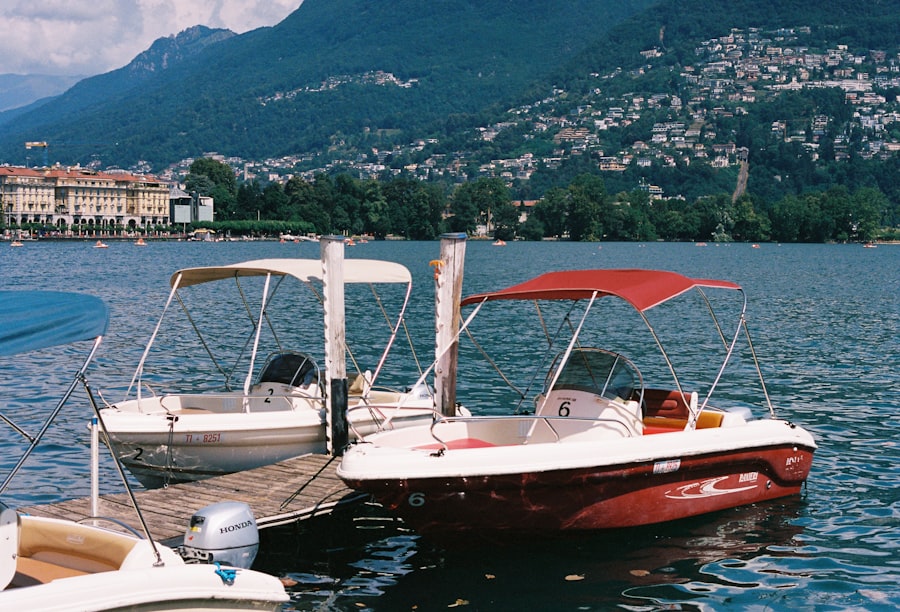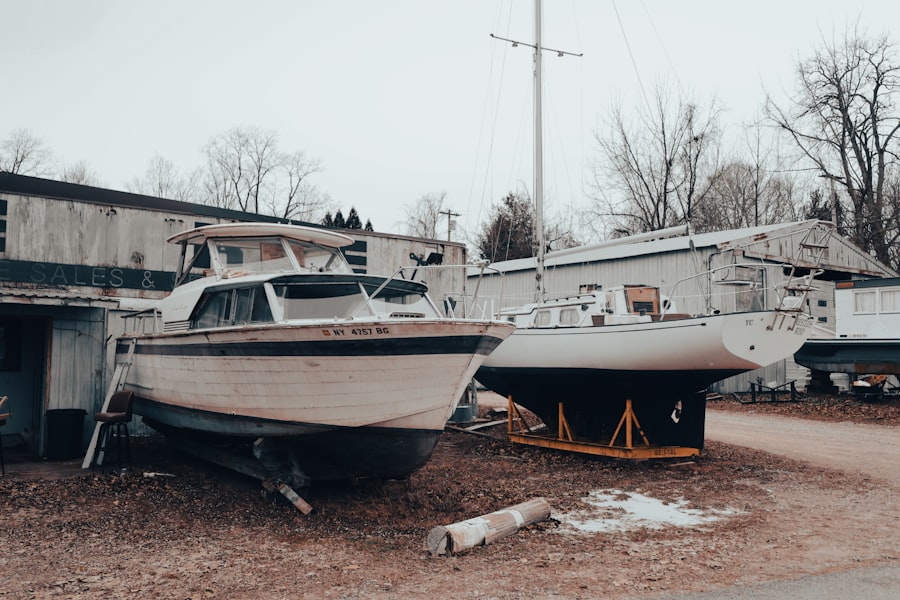The search for a used boat can be an exciting yet daunting task, especially for first-time buyers. One of the most common places to start is online marketplaces. Websites such as Boat Trader, Craigslist, and eBay offer extensive listings of used boats across various categories, from small fishing vessels to larger yachts.
These platforms allow users to filter their searches based on location, price range, and boat type, making it easier to find a suitable option. Additionally, many of these sites provide detailed descriptions, photographs, and even seller contact information, which can facilitate initial inquiries. Another valuable resource for finding used boats is local boat dealerships and brokers.
Many dealerships specialize in pre-owned boats and often have a selection of well-maintained vessels that have been inspected and serviced. Working with a broker can also provide access to boats that may not be listed online, as they often have connections within the boating community. Furthermore, attending boat shows or local marine expos can be an excellent way to discover used boats for sale.
These events often feature a variety of sellers and can provide opportunities to see multiple boats in one location, allowing for direct comparisons.
Key Takeaways
- Used boats can be found through dealerships, online marketplaces, and private sellers.
- Important factors include boat condition, history, size, and intended use.
- Thorough inspections should cover the hull, engine, electronics, and safety equipment.
- Negotiation strategies can help secure a better price based on inspection findings.
- Financing options and ongoing maintenance costs should be planned before purchase.
Factors to Consider When Buying a Used Boat
When considering the purchase of a used boat, several critical factors come into play that can significantly influence the decision-making process. First and foremost is the intended use of the boat. Buyers should clearly define what they plan to do with the vessel—whether it’s for fishing, cruising, water sports, or simply leisure outings.
Different types of boats are designed for specific activities; for instance, a fishing boat may have features like rod holders and live wells, while a sailboat will prioritize stability and wind performance. Understanding the primary purpose will help narrow down the options and ensure that the chosen boat meets the buyer’s needs. Another essential factor is the boat’s condition and age.
Older boats may come at a lower price point but could require more maintenance and repairs. It’s crucial to assess the overall condition of the hull, engine, and onboard systems. Buyers should also consider the brand reputation and model history; some manufacturers are known for their durability and reliability, while others may have a track record of issues.
Researching reviews and seeking advice from experienced boaters can provide insights into which models hold their value over time and which may be prone to problems.
Tips for Inspecting a Used Boat

Inspecting a used boat is a vital step in the purchasing process that can save buyers from future headaches. A thorough inspection should begin with a visual examination of the hull for any signs of damage or wear. Look for cracks, blisters, or signs of previous repairs that could indicate structural issues.
Pay close attention to the transom and keel, as these areas are often subject to stress and can reveal potential problems if not properly maintained. In addition to the exterior inspection, it’s essential to evaluate the boat’s mechanical systems. This includes checking the engine for signs of corrosion or leaks, inspecting the fuel system, and ensuring that all electrical components are functioning correctly.
A sea trial is also highly recommended; this allows potential buyers to experience how the boat handles on the water. During the trial, pay attention to how the engine performs, how smoothly it accelerates, and whether there are any unusual noises or vibrations. Bringing along a knowledgeable friend or hiring a marine surveyor can provide additional expertise during this critical phase.
Negotiating the Price of a Used Boat
| Metric | Description | Typical Range | Impact on Negotiation |
|---|---|---|---|
| Boat Age | Number of years since the boat was manufactured | 1 – 30 years | Older boats generally have lower prices; newer boats command higher prices |
| Boat Condition | Overall state including hull, engine, and interior | Excellent, Good, Fair, Poor | Better condition increases price; poor condition lowers price |
| Engine Hours | Total hours the engine has been used | 50 – 2000 hours | Lower engine hours typically increase value; higher hours reduce price |
| Market Demand | Current demand for used boats in the area | Low, Medium, High | High demand can reduce negotiation room; low demand increases bargaining power |
| Comparable Sales | Prices of similar boats recently sold | Varies by model and location | Provides benchmark for fair price and negotiation leverage |
| Additional Equipment | Extras like electronics, trailers, or safety gear included | None to Full Package | More equipment can justify higher price |
| Seller Motivation | Urgency or willingness of seller to negotiate | Low to High | Highly motivated sellers may accept lower offers |
| Inspection Results | Findings from professional boat inspection | Clean to Major Issues | Issues found can be used to negotiate price down |
Negotiating the price of a used boat can be one of the most challenging aspects of the buying process. It’s essential to approach this stage with a clear understanding of the market value of similar boats in your area. Researching comparable listings can provide leverage during negotiations and help establish a fair price range.
If you find discrepancies between your research and the seller’s asking price, be prepared to present your findings in a respectful manner. When entering negotiations, it’s crucial to remain calm and composed. Start with an offer that reflects your research but leaves room for negotiation.
Many sellers expect some back-and-forth discussion on price, so don’t be afraid to make an initial offer lower than what you’re willing to pay. Additionally, consider other factors that may influence the price, such as any necessary repairs or upgrades that you’ve identified during your inspection. Highlighting these points can justify your offer and potentially lead to a more favorable agreement.
Financing Options for Used Boats
Financing a used boat can be an essential consideration for many buyers who may not have the full purchase amount available upfront. Various financing options exist, each with its own set of terms and conditions. Traditional bank loans are one common route; many banks offer specific loans for recreational vehicles, including boats.
These loans typically require a down payment and may have fixed or variable interest rates depending on the lender’s policies. Another option is to explore financing through specialized marine lenders who focus exclusively on boat loans. These lenders often have more flexible terms tailored to boat buyers and may offer competitive rates based on the type of vessel being purchased.
Additionally, some dealerships may provide in-house financing options or partnerships with lenders that can simplify the process for buyers. It’s advisable to compare multiple financing offers to ensure you secure the best possible terms.
Maintenance and Repairs for Used Boats

Owning a used boat comes with ongoing responsibilities related to maintenance and repairs that are crucial for ensuring longevity and performance. Regular maintenance tasks include checking fluid levels, inspecting electrical systems, cleaning filters, and ensuring that all safety equipment is in good working order. Creating a maintenance schedule can help owners stay organized and proactive about necessary upkeep.
In addition to routine maintenance, it’s essential to be prepared for potential repairs that may arise over time. Common issues with used boats include engine problems, leaks in the hull or plumbing systems, and wear on sails or upholstery. Establishing a relationship with a trusted marine mechanic can be beneficial; they can provide expert advice on repairs and help identify issues before they become significant problems.
Furthermore, keeping detailed records of all maintenance work performed can enhance resale value down the line.
Benefits of Buying a Used Boat
Purchasing a used boat offers several advantages that can make it an appealing option for many buyers. One of the most significant benefits is cost savings; used boats typically come at a fraction of the price of new models. This affordability allows buyers to invest in additional accessories or upgrades that enhance their boating experience without breaking the bank.
Another advantage is that used boats often come with established histories that can provide insights into their performance and reliability. Many sellers are willing to share maintenance records or details about previous usage, which can help buyers make informed decisions. Additionally, buying used allows individuals to avoid the steep depreciation that new boats experience as soon as they leave the dealership lot.
This means that if you decide to sell your used boat later on, you may retain more of its value compared to a new purchase.
Finalizing the Purchase of a Used Boat
Once you’ve found the right used boat and negotiated a satisfactory price, it’s time to finalize the purchase. This process typically involves drafting a bill of sale that outlines all pertinent details about the transaction, including the purchase price, boat identification number (VIN), and any agreed-upon conditions regarding repairs or upgrades prior to sale. Both parties should sign this document to ensure clarity and legal protection.
Before completing the transaction, it’s also essential to verify that all necessary paperwork is in order. This includes checking that the title is clear of liens and ensuring that any required registration documents are available. Depending on local regulations, you may need to complete additional paperwork for transferring ownership officially.
After all documentation is finalized and payment is made, consider scheduling a final inspection before taking possession of your new vessel; this ensures everything is in order before you set sail on your adventures ahead.


